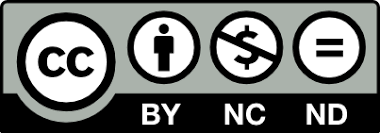METAPHORS IN COPYWRITING
Keywords:
metaphor, creative work, copywriting, decoder’s background knowledgeAbstract
This paper explores the creating, functioning and decoding processes of metaphor in copywriting and discusses the results based on the emotional background of a decoder. In addition, the significance of creative work, the conceptual and linguistic bases of metaphor are examined and the emphasis is placed on the background knowledge and a mood of a decoder. Moreover, the significance of how the intended message is formed and delivered to the decoder is discussed. The data-based analysis and survey as well as the comparative method were used to analyse the findings of the research. The goals of the paper are as follows: 1. To show the importance of metaphor for creative thinking and creative work as well as to demonstrate the function and significance of metaphor in copywriting. 2. To reveal the building process of an intention in metaphor and define the difference between a metaphor and other stylistic or cognitive figures of speech. 3. To define the significance of the educational, cultural and emotional background knowledge of the target audience in the process of decoding metaphor. The empirical data of this paper embrace the relevant examples from social networking sites.
Full Text (PDF)
References
Dave Bedwood, 2010, The Idea Writers: Copywriting in a New Media and Marketing Era. (in English)
M.Bessis, 1973, Red Cell Shapes. An Illustrated Classification and Its Rationale. (in English)
Douglas Hofstadter, 2013, Cognitive Science: Mind as mirror. (in English)
Felton, George, 2013, Advertising: Concept and Copy. (in English)
Fillis, I.R. and Rentschler, Ruth, 2006, The Role of Creativity in Entrepreneurship. (in English)
Forceville, Charles, 2006,” Non-verbal and multimodal metaphor in a cognitivist framework: Agendas for research.” (in English)
Lakoff, George and Mark, Johnsen, 2003, Metaphors we live by. (in English)
Ola W. A. Gafour , Walid A. S. Gafour May, 2020, Creative Thinking Skills. (in English)
Rusieshvili, Manana, 2005, The Proverb, Lomisi Press (in Georgian)
Sternberg, R.J., and Lubart, T.I. 1996, Investing in Creativity. (in English)
Totibadze, S, 2021 Gender stereotypes and a fair-tale ( In Georgian)
Torrance, E.P. 1974, Tests of Creative Thinking Figurative. (in English)
https://www.optimonk.com/what-is-your-unique-selling-proposition-usp-examples
https://www.abccopywriting.com/2010/02/22/metaphors-copywriting
https://grammar.yourdictionary.com/vs/idiom-vs-metaphor-how-recognize-difference
https://publika.ge/article/literatura-feminuri-maskulinuri-da-qali-rogorc-samzeriobieqti/












